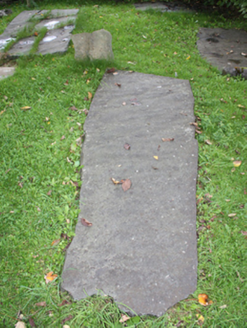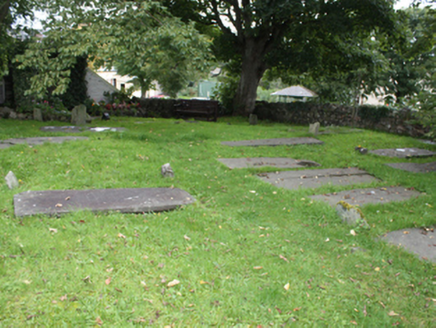Survey Data
Reg No
40802007
Rating
Regional
Categories of Special Interest
Archaeological, Social
Original Use
Graveyard/cemetery
Historical Use
Graveyard/cemetery
Date
1650 - 1750
Coordinates
253028, 449183
Date Recorded
16/09/2008
Date Updated
--/--/--
Description
Graveyard on sub-rectangular plan, c. 1650 to 1750, containing mainly recumbent gravemarkers. Possibly containing earlier fabric. Inscriptions to gravemarkers now illegible. Modern rubble stone grotto with Virgin Mary located to the south-west corner of site. Site bounded by hedge to the south and by rubble stone walls with rubble coping over to other boundaries; wall to the north whitewashed to exterior face. Gateway to the north-east corner of site comprising a pair of rendered and whitewashed gate piers (on square-plan) having pyramidal coping over, and with modern metal gate. Located to the south-east end of Culdaff.
Appraisal
This simple disused graveyard is an important element of the built heritage and archaeology of Culdaff. It probably predates the construction of the Church of Ireland church (see 40802006) to the north-west, which was built 1739 or 1747, but it was probably in use throughout the eighteenth century and perhaps into the nineteenth century. It was no longer in use by the start of the twentieth century (indicated as ‘disused’ on the Ordnance Survey twenty-five map of 1900-2). It contains a collection of mainly recumbent gravemarkers of indeterminate date with the inscriptions now mainly illegible. According to local tradition this may be part of the site of an early Christian church founded by St. Buadan. This graveyard may have originally formed part of a larger graveyard\site, parts of which may encompass the site of the Church of Ireland church (see 40802006) located a short distance to the north-west at the opposite side of the road. This well-maintained early graveyard forms attractive feature in the streetscape to the south-east end of Culdaff, and is an integral element of the social history and built heritage of the town. The simple rubble stone boundary walls and gate piers to site add to the setting and context, and complete this composition.









